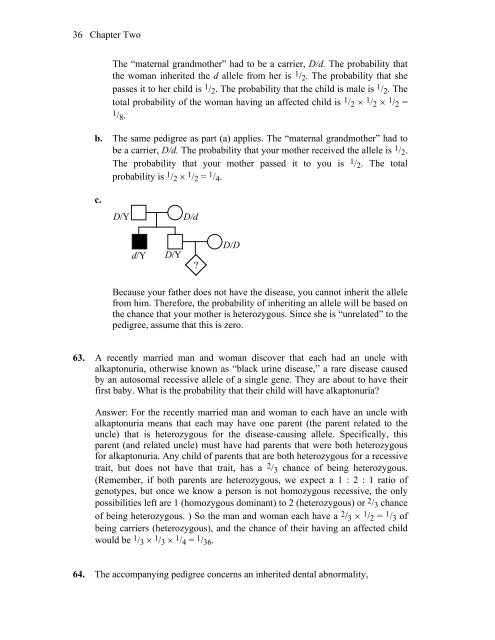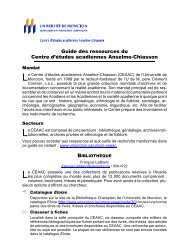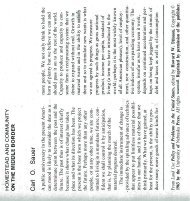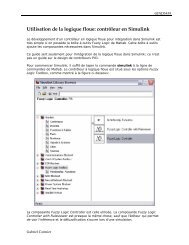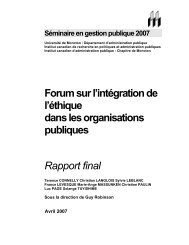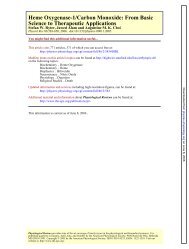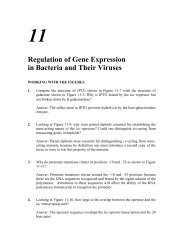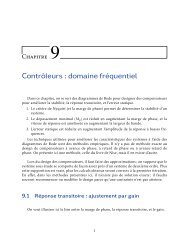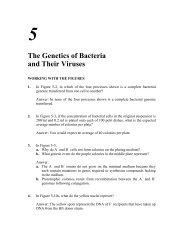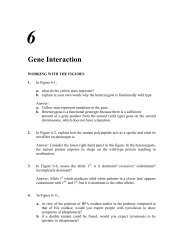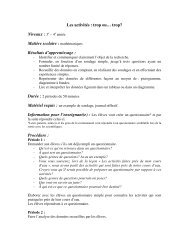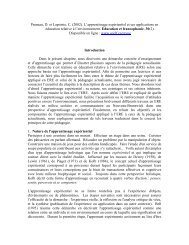IGA 8/e Chapter 2
IGA 8/e Chapter 2
IGA 8/e Chapter 2
Create successful ePaper yourself
Turn your PDF publications into a flip-book with our unique Google optimized e-Paper software.
36 <strong>Chapter</strong> TwoThe “maternal grandmother” had to be a carrier, D/d. The probability thatthe woman inherited the d allele from her is 1 / 2 . The probability that shepasses it to her child is 1 / 2 . The probability that the child is male is 1 / 2 . Thetotal probability of the woman having an affected child is 1 / 2 1 / 2 1 / 2 =1 / 8 .b. The same pedigree as part (a) applies. The “maternal grandmother” had tobe a carrier, D/d. The probability that your mother received the allele is 1 / 2 .The probability that your mother passed it to you is 1 / 2 . The totalprobability is 1 / 2 1 / 2 = 1 / 4 .c.D/YD/dd/YD/Y?D/DBecause your father does not have the disease, you cannot inherit the allelefrom him. Therefore, the probability of inheriting an allele will be based onthe chance that your mother is heterozygous. Since she is “unrelated” to thepedigree, assume that this is zero.63. A recently married man and woman discover that each had an uncle withalkaptonuria, otherwise known as “black urine disease,” a rare disease causedby an autosomal recessive allele of a single gene. They are about to have theirfirst baby. What is the probability that their child will have alkaptonuria?Answer: For the recently married man and woman to each have an uncle withalkaptonuria means that each may have one parent (the parent related to theuncle) that is heterozygous for the disease-causing allele. Specifically, thisparent (and related uncle) must have had parents that were both heterozygousfor alkaptonuria. Any child of parents that are both heterozygous for a recessivetrait, but does not have that trait, has a 2 / 3 chance of being heterozygous.(Remember, if both parents are heterozygous, we expect a 1 : 2 : 1 ratio ofgenotypes, but once we know a person is not homozygous recessive, the onlypossibilities left are 1 (homozygous dominant) to 2 (heterozygous) or 2 / 3 chanceof being heterozygous. ) So the man and woman each have a 2 / 3 1 / 2 = 1 / 3 ofbeing carriers (heterozygous), and the chance of their having an affected childwould be 1 / 3 1 / 3 1 / 4 = 1 / 36 .64. The accompanying pedigree concerns an inherited dental abnormality,


